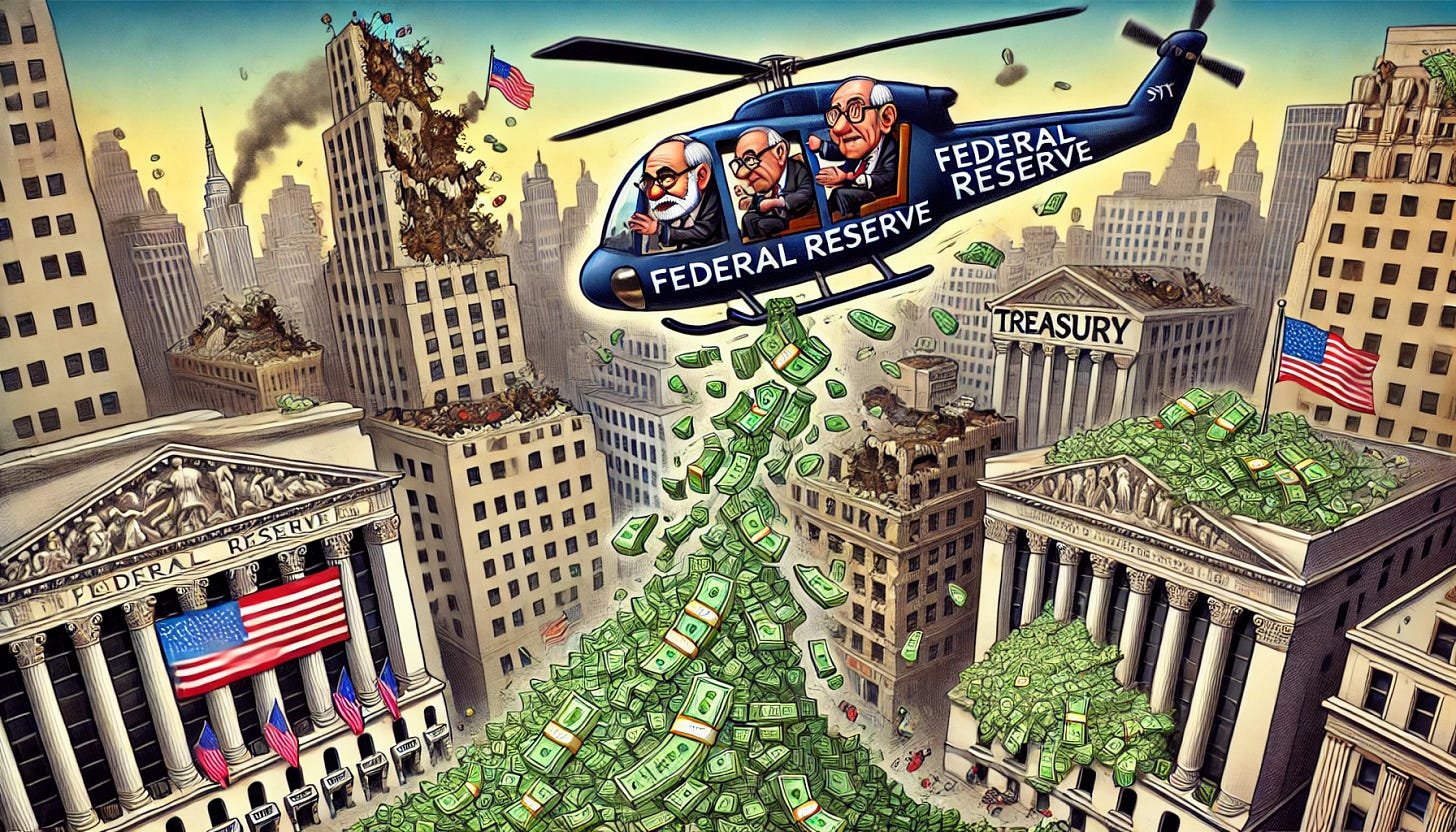The Greatest Slush Fund Ever
How a single government program saved the financial system and led to the rise of Donald Trump
16 years ago this month, the financial system teetered on the brink.
Lehman Brothers had collapsed, Bear Stearns was gone, and markets were in free fall.
In an attempt to stem the bleeding, the US government enacted the most significant financial regulation since the Great Depression in October 2008.
At the time, it was widely criticized as a bail out of the bankers responsible for the subprime crisis and ensuing market meltdown.
And it was.
But the officials involved believed that the unprecedented intervention was necessary to prevent a wider crisis - they believed that the very survival of the global financial system was at stake.
And perhaps it was.
What the officials didn't predict was that the Troubled Asset Relief Program, or TARP, would light the populist fuse that culminated in the political ascension of Donald Trump.
The commentary on Trump's rise usually gets this part wrong, painting Trump as the cause, not the result of a divided society.
That's because they don't know their history, how the reverberations of single government action in the depths of the Great Financial Crisis (“GFC”) are still being felt today.
--
After Lehman Brothers collapsed in September 2008, financial markets were reeling.
Bear Stearns had gone under earlier in the year, Merrill Lynch had been absorbed into JP Morgan Chase along with Bear Stearns and Washington Mutual, and AIG had received an $85 billion emergency loan from the Federal Reserve to stave off collapse.
No one knew where the subprime bodies were buried and traders were selling everything, creating a price vortex that threatened to take down the system itself.
The federal government needed a comprehensive rescue plan.
And on October 3, 2008, the Federal Reserve and Treasury launched the greatest slush fund ever created, the Troubled Asset Relied Program, or TARP.
The brainchild of Treasury Secretary Hank Paulson, Fed Chairman Ben Bernanke, NY Fed President Tim Geithner and wunderkind Treasury staffer Neel Kashkari, TARP was authorized to fund the purchase of $700 billion in “troubled assets.”
The hope was that purging toxic mortgage debt and derivatives off bank balance sheets and stepping into backstop institutions would stem the panic.
Which within a few months it largely had.
By the spring of 2009 the stock market had bottommed as private capital began to trickle back into the system.
The TARP funds were eventually — and controversially — also used to bail out the Big 3 automakers, save insolvent insurer AIG and prop up the “too big to fail” money center banks (which included Goldman Sachs and Morgan Stanley, who just happened to have added federal charters in September 2008 - one month earlier).
Arguably, this single piece of legislation did save the global financial system.
But at a tremendous cost.
Public backlash against “bank bailouts” in the GFC era were aimed at TARP, (although the kids camped out in lower Manhattan probably didn’t know that at the time).
Images and stories of working class homeowners kicked out of their homes at the same time bankers bankers responsible for the housing market’s collapse receive billions of dollars instead of jail time set off Occupy Wall Street protests.
The mounting social revulsion and populist angst spurred the Tea Party Movement, highlighting anger over income inequality and further eroding trust that public institutions cared about the working class.
A few years later, riding this populist wave, Donald Trump stunned the world and won the 2016 presidential election.
TARP also marked the first time the government had stepped in to buy impaired assets to stem a financial crisis.
At the time, concerns over “Moral Hazard” (the notion that if actors believe that they won’t be responsible for bad bets, they’ll make riskier and riskier ones) were glossed over in favor of reducing “structural risk.”
A few marginalized commentators argued back then that bailing out the banks meant financial markets would anticipate government intervention in future crises, encouraging reckless risk taking.
But these concerns were ignored and regulators marveled at the impact they could have on financial markets.
And as investors have watched repeated government intervention into markets, they indeed have indeed taken on more and more risk, confident that the Fed and Treasury would be there to backstop losses.
Over the past 16 years this playbook has been expanded and perfected, juicing returns on financial assets of all kinds.
But this has driven a wedge into American society, as one group has gotten wildly rich while the other has floundered.
It’s no coincidence that the original Bitcoin white paper was also penned in October 2008.
ZIRP (Zero Interest Rate Policy) and trillions in COVID relief drew their inspiration from TARP, both of which helped the US breach $30 trillion in federal debt in 2022.
So now that TARP is old enough to drive, let’s take a moment to appreciate just how impactful a single piece of legislation can be to shape the path of a country.
It matters who’s in government.
It matters who’s in the room where it happens.







